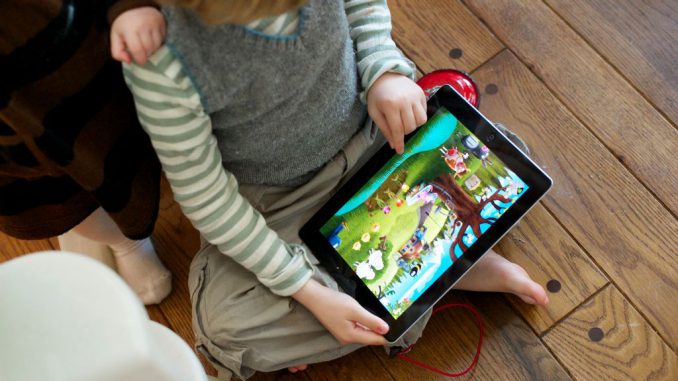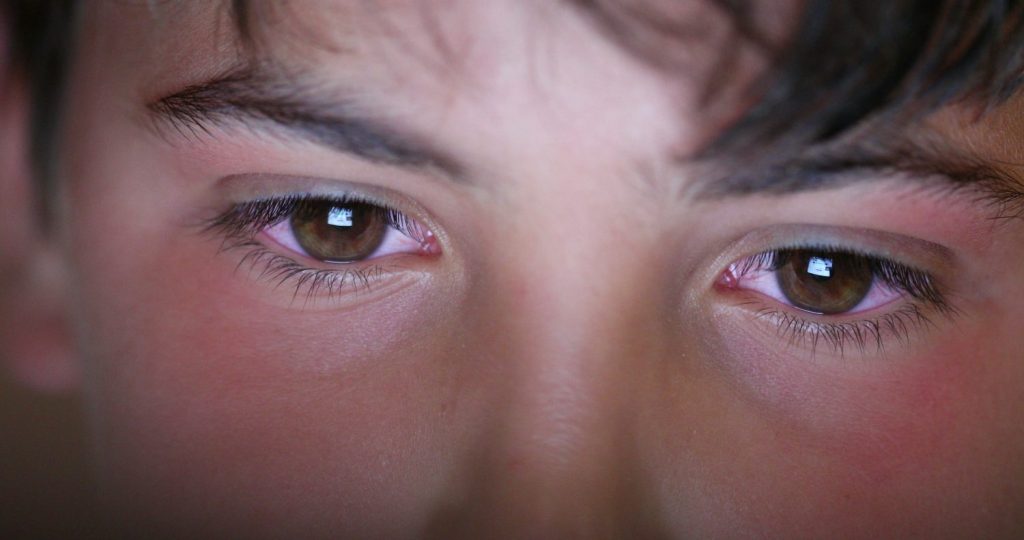
By Mark Waghorn
Children spent almost 90 minutes extra each day staring at screens during the pandemic, according to new research. They spent an average of over four hours on tablets, smartphones and in front of the TV.
This was 84 minutes more than before the COVID-19 outbreak – mainly due to handheld devices and personal computers. Increases were highest for 12 to 18-year-olds. The 52 percent rise – from 2.7 to 4.1 hours – coincided with isolation, social distancing and cancelation of extracurricular activities. The study was published in the journal JAMA Pediatrics.

Corresponding author Professor Sheri Madigan, of Calgary University in Canada, said, “This study shows an association between the COVID-19 pandemic and increases in screen time. Practitioners and pandemic recovery initiatives should focus on fostering healthy device habits including moderating use, monitoring content, prioritizing device-free time and using screens for creativity or connection.”
Too much increases the risk of a host of conditions including deteriorating eyesight and neck and shoulder strain. It also fuels sedentary behavior and overeating – potentially resulting in obesity, diabetes and heart disease later in life.

School closures sparked an unprecedented move to remote learning. Youngsters were left to rely on digital devices. The international team pooled data from 46 studies around the world which involved a total of 29,000 children and adolescents.
Madigan said: “The COVID-19 pandemic has led to considerable disruptions in the lives and routines of children, adolescents and families which is likely associated with increased levels of screen time.
“Findings suggest when interacting with children and caregivers, practitioners should place a critical focus on promoting healthy device habits. It can include moderating daily use, choosing age-appropriate programs, promoting device-free time, sleep and physical activity and encouraging children to use screens as a creative outlet or a means to meaningfully connect with others.”
Stressed out parents also experienced substantial challenges including financial instability, job insecurity, loss of child care and increased home-schooling responsibilities.
Madigan said: “To cope with such unparalleled disruptions to normal living conditions, many children and families likely used digital devices to occupy their time during the pandemic. Population-level increases in child and adolescent screen time have therefore been expected.”
At the same time, children’s engagement in moderate to vigorous physical activity during the pandemic is estimated to have dropped by a third.
Madigan said: “Policy-relevant pandemic recovery planning and resource allocation should therefore consider how to help children, adolescents and families to ‘sit less and play more’ to meet the 24-hour movement guidelines.”

The NHS advises five to 18-year-olds to aim for an average of at least 60 minutes of moderate or vigorous-intensity physical activity a day across the week.
They should take part in a variety of types to develop movement skills, muscles and bones and limit time spent sitting or lying down.
Madigan said over-reliance on digital devices will be temporary for some – but others may become hooked. She said: “In most circumstances, the social distancing restrictions prohibited face-to-face social interactions between children and adolescents from different households, especially early in the pandemic.”
Therefore, it is likely they resorted to and relied on digital devices to stay connected. This finding aligns with a recent census of screen use among children and adolescents, in which 83% of respondents reported using screens to stay connected with family and friends.
“Adolescents were also more likely than younger children during the pandemic to seek new outlets for creative expression, learning new skills and building on existing skills in a remote context, much of which took place on digital devices,” she added.
Produced in association with SWNS Talker.
Recommended from our partners
The post Kids Spent Almost 90 Minutes Extra A Day Staring At Screens During Pandemic appeared first on Zenger News.

